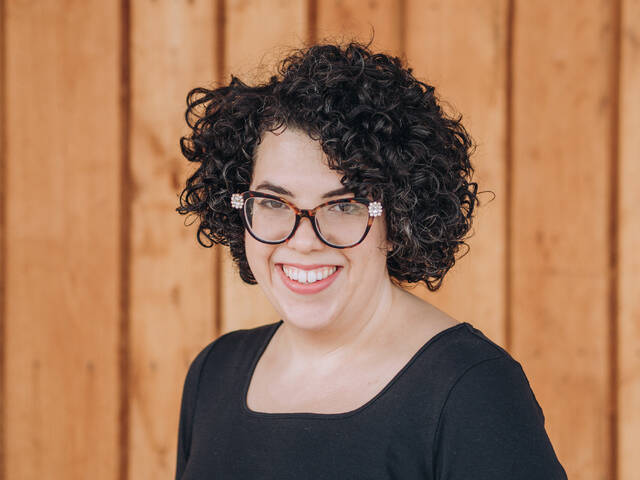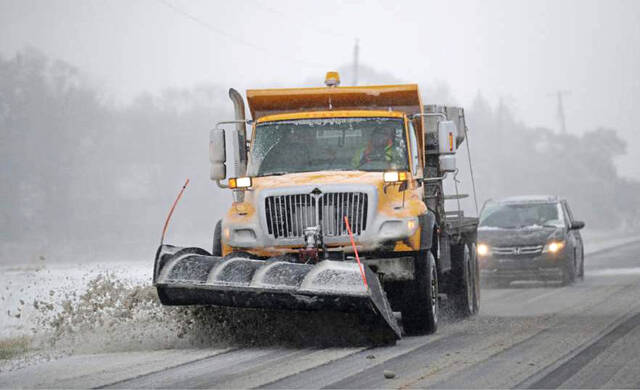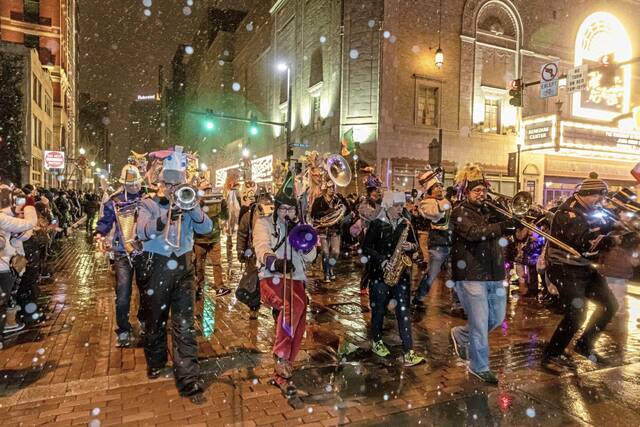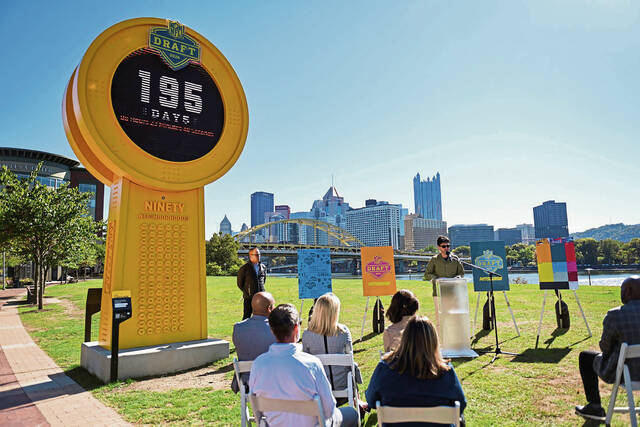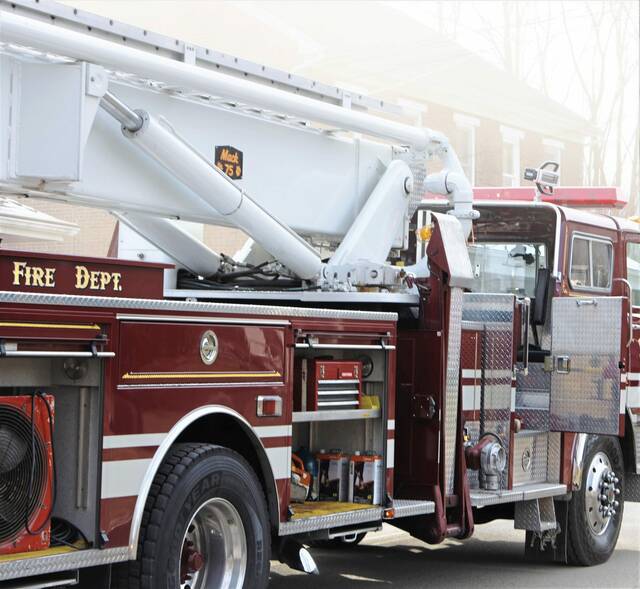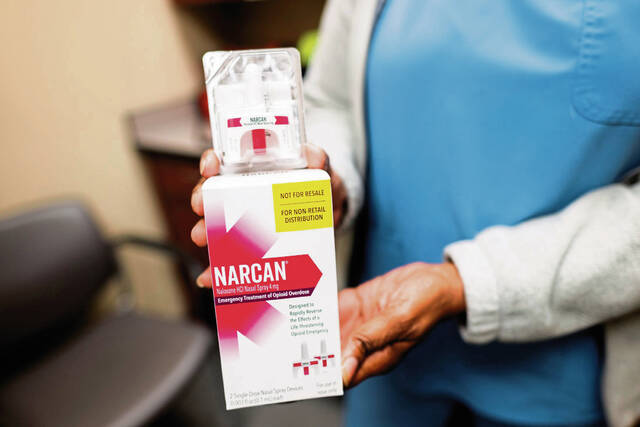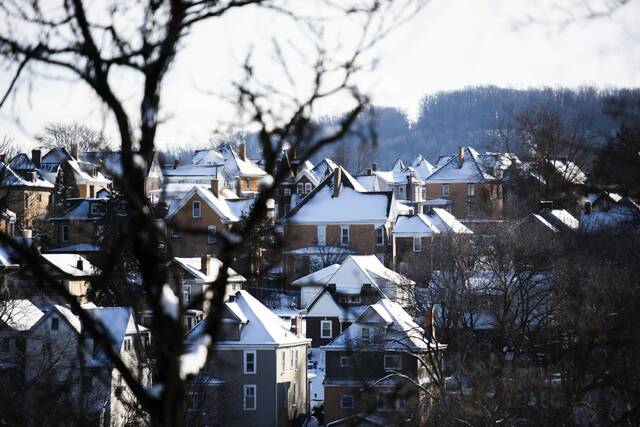Marin Exler, who grew up in Crafton, held no illusions that her college education would be free, nor did she procrastinate paying down the debt of almost $120,000 that she incurred at Case Western Reserve University.
She worked multiple campus jobs, made bigger-than-required loan payments after graduating, refinanced double-digit interest rates on her private loans and lived at home to save money during the pandemic lockdown.
Even so, like tens of millions of other graduates nationwide, the 25-year-old member of the Class of 2020 feels angst. That’s because federal loan repayments are resuming in October after a three-year government pause.
For Exler, a consultant who works in New York City, that means payments of $535 a month on her federal debt in addition to $636 for her private loans.
“It’s almost every bit of my disposable income,” said Exler, who studied political science and Spanish.
In Washington, debate over forgiving debt often turns to why students today can’t exhibit the same personal responsibility that earlier generations did in settling their loan obligations.
Students like Exler say that misses the point, given decades of rapidly escalating college prices.
“The amounts those people paid off previously are not the same as what we’re accumulating now — like six figures of student loan debt,” she said.
“Sometimes I wish I could tell these folks that some of us really buckled down, we have a budget, and we track every penny,” she said. “We make every decision around how to, strategically, make enough to live well and be happy but also stay on top of these debts.
“My student loan has affected every choice I’ve made in the past three years since graduating,” she added. “I don’t know if I’ll ever be able to have kids or own a home because of this debt.”
Nationally, there are more than 45 million student borrowers.
Collectively, they owed $1.77 trillion in federal and private student loan debt as of the second quarter of this year, according to Lending Tree, a North Carolina-based loan marketplace and broker.
Of the total, $128.77 billion is private student loan debt.
In June, the U.S. Supreme Court struck down President Joe Biden’s student loan forgiveness program, which would have wiped clean $10,000 or more in debt per person based on need. The conservative-led court voted 6-3 that the president had overstepped his authority.
It cleared the way for a Sept. 1 reactivation of those loans in accordance with Congress. Earliest payments are due next month, though the federal government has instituted options including an “on-ramp” provision that delays the Department of Education by 12 months from reporting missed or partial payments as delinquent to credit agencies, though interest will still accrue.
On June 30, the same day the high court ruled, the Biden administration unveiled another option for borrowers, allowing them to enroll online in a new income-driven student loan repayment plan called Saving on a Valuable Education, or SAVE.
It is projected to lead to loan cancellation totaling $39 billion, a fraction of the $430 billion earlier anticipated, according to Lending Tree.
“We recognize that the return to repayment mandated by Congress may cause significant financial challenges for many borrowers, many of whose lives may have changed since the last time they made a student loan payment,” the U.S. Department of Education said in a statement this week. “We are committed to making that process as smooth as possible by providing support and resources based on borrowers’ unique financial situation.”
In Pennsylvania, where there are more than 2 million student borrowers, the stakes are especially high.
That’s because average debt among Pennsylvania’s borrowers is $39,375, the third-highest average in the nation behind $39,928 in New Hampshire and $39,705 in Delaware, according to the most recent survey by the Institute for College Access and Success.
Making things worse is the potential for fraud.
Officials including Pennsylvania Attorney General Michelle Henry are warning students and families that sophisticated scamsters want to capitalize on confusion and rush to meet the October deadline.
“Be vigilant. Never answer your phone if you don’t recognize the number. If the caller is legitimate, they will leave a voicemail or send you a text message and/or email,” her office warned this month. “If the voicemail, text or email seems suspicious, ignore it.”
She said help is free through an individual’s loan servicer or the Department of Education website.
“Your loan servicer may have changed during the payment pause, so if you do not know who your current loan servicer is, you may log onto your student loan account on www.studentaid.gov to find your current servicer,” Henry’s office said.
Another Pittsburgh-area borrower, Steph Sorensen, 39, of Greenfield, said she and her husband owe more than $1,200 a month in private and government loans.
A graduate of Bard College at Simon’s Rock in Massachusetts, she had hoped to use her undergraduate liberal arts degree and a master’s of fine arts in fiction writing from the University of Pittsburgh to teach writing as a college professor.
She taught as an adjunct but concluded that career path did not pay enough given what she owed in loans.
“This debt has determined the trajectory of every aspect of our adult lives,” she said. “We wouldn’t be living in the home we’re living in, we wouldn’t be driving old junker cars. We’d have retirement savings.”
She was a social media manager for a restaurant but is now staying at home to raise her 9-year-old, who is autistic. Becoming a parent led her to default on loan payments, and she is now in settlement.
While she said that was a horrible choice, she added, “I’m not going to not have a child because of this debt.”
She contends that education is a basic necessity, so people should have access to it without having to struggle financially.
“There are a number of basic human needs that everyone has — food, shelter, health care, education — and I think all of those should be free,” she said.
Throughout the summer, experts urged borrowers who are restarting loan payments to avoid confusion by acting early since many loan servicers changed during the pandemic.
“We’ve never had a situation where 40 million people have to take an action to resume payment of their student loans,” said Bob Collins, vice president of financial aid with Western Governors University, a nonprofit, private online university based near Salt Lake City that was founded by 19 Western governors.
Exler initially eyed working in the nonprofit world but had to pivot to for-profit consulting given income prospects and what she owed in loans. She is grateful she at least has enough earnings to take on her debt.
“There are many people doing extremely important and essential jobs in health care and teaching and other essential industries that just don’t get paid enough,” she said. “These people are central to having a vibrant economy and a healthy future.”




